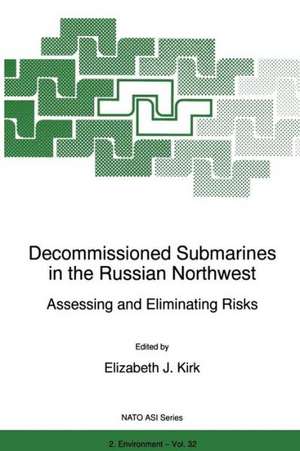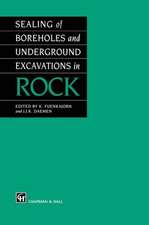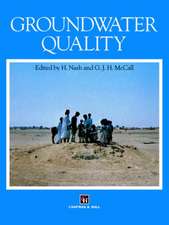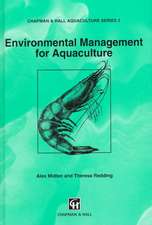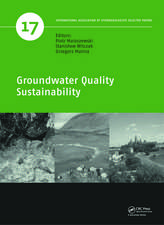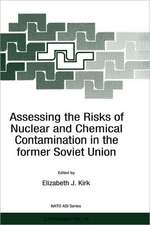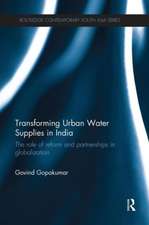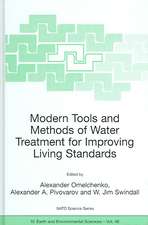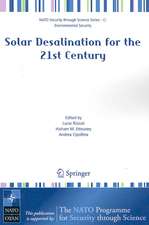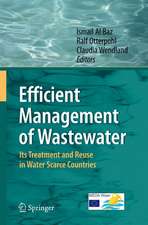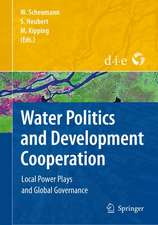Decommissioned Submarines in the Russian Northwest: Assessing and Eliminating Risks: NATO Science Partnership Subseries: 2, cartea 32
Editat de E.J. Kirken Limba Engleză Paperback – 14 oct 2012
Din seria NATO Science Partnership Subseries: 2
- 15%
 Preț: 638.43 lei
Preț: 638.43 lei - 5%
 Preț: 1420.29 lei
Preț: 1420.29 lei -
 Preț: 390.84 lei
Preț: 390.84 lei - 18%
 Preț: 949.90 lei
Preț: 949.90 lei -
 Preț: 401.24 lei
Preț: 401.24 lei - 15%
 Preț: 653.14 lei
Preț: 653.14 lei - 5%
 Preț: 1414.64 lei
Preț: 1414.64 lei - 15%
 Preț: 642.18 lei
Preț: 642.18 lei - 18%
 Preț: 1846.40 lei
Preț: 1846.40 lei - 18%
 Preț: 949.90 lei
Preț: 949.90 lei -
 Preț: 380.07 lei
Preț: 380.07 lei - 15%
 Preț: 643.84 lei
Preț: 643.84 lei - 18%
 Preț: 1839.63 lei
Preț: 1839.63 lei -
 Preț: 416.64 lei
Preț: 416.64 lei - 18%
 Preț: 1234.77 lei
Preț: 1234.77 lei - 18%
 Preț: 1834.90 lei
Preț: 1834.90 lei - 18%
 Preț: 950.96 lei
Preț: 950.96 lei - 15%
 Preț: 655.78 lei
Preț: 655.78 lei -
 Preț: 403.53 lei
Preț: 403.53 lei - 18%
 Preț: 1836.94 lei
Preț: 1836.94 lei - 15%
 Preț: 645.47 lei
Preț: 645.47 lei - 18%
 Preț: 946.87 lei
Preț: 946.87 lei - 18%
 Preț: 1227.99 lei
Preț: 1227.99 lei - 18%
 Preț: 1232.57 lei
Preț: 1232.57 lei -
 Preț: 398.15 lei
Preț: 398.15 lei - 18%
 Preț: 1232.71 lei
Preț: 1232.71 lei - 18%
 Preț: 1223.88 lei
Preț: 1223.88 lei - 18%
 Preț: 1228.77 lei
Preț: 1228.77 lei
Preț: 381.98 lei
Nou
Puncte Express: 573
Preț estimativ în valută:
73.10€ • 79.38$ • 61.40£
73.10€ • 79.38$ • 61.40£
Carte tipărită la comandă
Livrare economică 22 aprilie-06 mai
Preluare comenzi: 021 569.72.76
Specificații
ISBN-13: 9789401063685
ISBN-10: 9401063680
Pagini: 188
Ilustrații: VII, 179 p.
Dimensiuni: 160 x 240 x 10 mm
Greutate: 0.27 kg
Ediția:Softcover reprint of the original 1st ed. 1997
Editura: SPRINGER NETHERLANDS
Colecția Springer
Seria NATO Science Partnership Subseries: 2
Locul publicării:Dordrecht, Netherlands
ISBN-10: 9401063680
Pagini: 188
Ilustrații: VII, 179 p.
Dimensiuni: 160 x 240 x 10 mm
Greutate: 0.27 kg
Ediția:Softcover reprint of the original 1st ed. 1997
Editura: SPRINGER NETHERLANDS
Colecția Springer
Seria NATO Science Partnership Subseries: 2
Locul publicării:Dordrecht, Netherlands
Public țintă
ResearchCuprins
I. Introduction.- 1 Current Radioactive Contamination Issues in the Arctic North and Operation and Infrastructure of the Russian Nuclear Fleet.- 2 Worldwide Decommissioning of Nuclear Submarines: Plans and Problems.- II. Spent Nuclear Fuel.- 3 The Development of a Comprehensive Understanding of the Handling and Transport of Submarines’ Spent Nuclear Fuel Out of Northwestern Russia.- 4 The Lepse Project: Result of the European Commission Study for Retrieval of Spent Fuel—TACIS Program.- 5 Interim Storage of Spent Nuclear Fuel in the Arctic Far North.- 6 Multi-Purpose Casks for Power Station Fuel: Possibly Also A Flexible, Economical Naval Fuel Management System?.- III. Low- and Intermediate-Level Liquid and Solid Wastes.- 7 Application of IVO International Ltd.’s “Mobile Nuclide Removal System” (NURES) for Liquid Radioactive Waste Treatment at the Paldiski Naval Training Center, Estonia and at the Repair and Technology Enterprise RTP “Atomflot,” Murmansk, Russia.- 8 The Development of a Modular Plant for Processing Liquid Radioactive Wastes from the Nuclear Fleet: “Korvet” Project.- 9 Low and Medium Radioactive Solid Waste: Concept for the Development of a Waste Treatment Facility.- 10 Catalytic Extraction Process (CEP) Applications to Mixed and Radioactive Wastes and Weapons Components: Potential for Use in Northwestern Russia.- IV. Risk Assessment And Monitoring Techniques.- 11 Assessment of Radioactive Contamination in the Arctic: Status Report from AMAP.- 12 Spent Nuclear Fuel Issues on the Kola Peninsula.- 13 Time-Risk Methodologies for Examining Remediation Technologies for Waste Contamination Sites.- V. Summary And Conclusions.- 14 Integration of Technical Projects with Larger Political and Economic Contexts.
